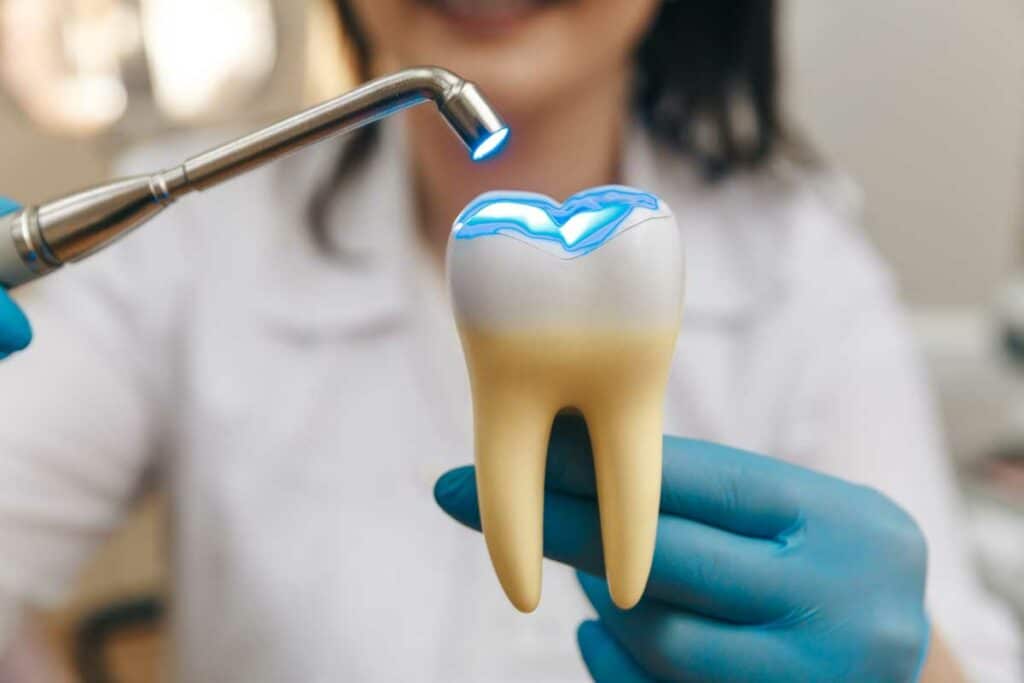Dentistry
General dentistry
The objectives of conservative dentistry include tooth care, eliminating decay and filling cavities created by the destruction of tooth enamel and dentin using appropriate materials.
Types of restoration:
- Fillings
- Inlays and onlays
- Partial crowns
Fillings restore the shape of the tooth. The type we recommend depends on how strong the tooth is, and how much dental substance has been lost.
Fillings
Composite fillings can usually be placed directly into the tooth in a single appointment. They help restore the tooth when little dental substance has been lost. However, if a tooth has suffered greater damage, there may not be enough substance left to hold a filling in place without risking the tooth breaking.
Inlays and partial crowns
If a tooth needs more than a filling but less than a crown, we may recommend an inlay or a partial crown. Two or more appointments are required for both of these restorations.
required for both of these restorations. An inlay fills in the area lost to decay, usually in the grooves between the cusps on the tooth’s chewing surface. We may prefer an inlay to a filling if we need to use a stronger material, or if more durable restorative work is required.
A partial crown is more like a crown in that it covers both the ridges and any cusps. We may prefer a partial crown to a crown if the tooth’s biting surface needs to be restored, but much of the dental substance is still strong and healthy.

What does it mean to be mercury free?
Amalgam fillings have long been referred to as “silver fillings”, giving the impression that silver is the basis of the restoration. In fact, amalgam contains several metals, such as tin and nickel. Mercury is used to bond the different metals, and has been studied for its safety and efficacy.
In addition to the improved appearance, tooth-colored fillings, inlays and onlays have also proven to be extremely durable. These fillings outperform the outdated amalgam fillings in several ways.
A major disadvantage of amalgam fillings is that they expand and contract more than natural dental substance. After years of movement in the tooth, amalgam can lead to fractures. When this happens, an infection can develop in the center of the tooth. At the very least, this requires another repair to strengthen the fragile, broken tooth.
Difference between ceramic and plastic fillings
Ceramic fillings are made of ceramic, which is durable and aesthetically attractive, while traditional composite fillings are made of plastic. Ceramics are most commonly used to replace old, large amalgam or composite fillings that have failed, broken or decayed.
A ceramic restoration has many advantages over traditional fillings, including:
- Greater strength that guarantees a longer service life.
- Outstanding aesthetics ceramic looks much more natural than composite resin
- Preservation of healthy dental substance large ceramic restorations are an ideal alternative to potentially short-lived composite fillings or full crowns, which typically require the removal of large amounts of healthy dental substance.

